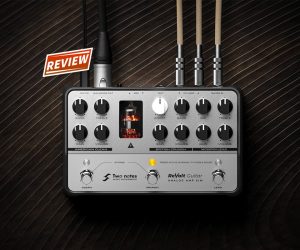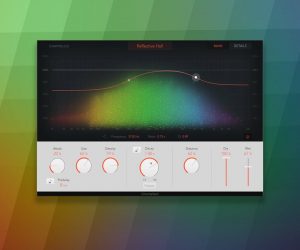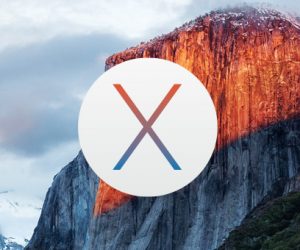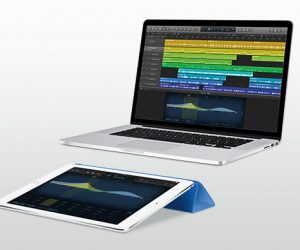
Apple Notes
The hyper-competent new iMacs are the Apple desktop workhorse. But where’s the next fully customisable Mac?
I’ll confess to being a bit of a snob when it comes to the iMac. I suppose that derives from witnessing the very first iMacs inveigl their way into the marketplace. The fruitily coloured iMac G3s were a huge departure from the stale beige designs previous. The iMac was a roaring success. Suddenly there multicoloured iMacs in high street businesses everywhere you turned. Thousands of people were inducted into the cult of Mac.
Of course, the iMac was the brainchild of the now deceased Steve Jobs, and his first brushstroke of genius after being appointed as the interim CEO of Apple, years after being frozen out of the company. iMac sales significantly contributed to turning around Apple’s sales figures slump. It was also the first Apple machine to eradicate the floppy drive in favour of the emerging USB standard. That certainly sent the audio world into a spin, as most plug-in and DAW copy protection involved authorisation via floppy disks.
But the iMac was a consumer computer, and it melded with Steve Jobs’ vision of an all-in-one design, much like the Macintosh 128k from 1984. While it was quick, courtesy of a 233MHz PowerPC G3 processor, it wasn’t workstation material. It had no upgradability in terms of PCI slots, which was the typical bus for anything considered capable of delivering multitrack 24-bit recording. Sure, it had Firewire, but a Firewire audio interface could only manage a handful of tracks recording to the sole internal ATA hard drive. Your best bet was an external Firewire drive. A USB hard drive wouldn’t cope at all.
ALUMINIUM NOT FOILED
So you’ll understand, in some way I hope, why I’ve shunned the iMac ever since, despite the fact the iMac platform has morphed into an extremely capable platform. Since the Intel-based aluminium design iMacs from 2007, the concept has become the standard Mac for the typical Mac user. And, of course, the only Mac option apart from laptops since 2013 following the ‘trash-can’ Mac Pro. Obviously there’s the iMac Pro, which is a vastly more capable machine than the 2013 trash-can Mac Pro, but the 2019 ‘Aluminum’ iMac models are seriously quick and very professional machines, too.
Only today was I sitting in a colour grading suite checking out some work being done on Davinci Resolve Studio – a standard platform for grading colour on everything from television commercials to feature films. Sat between the JBL monitoring and below a seriously large OLED display was the new 2019 iMac. When asked if the iMac was up to par in terms of speed and capability the resounding answer was “hell yeah!”. Here’s why:
OPTION UP
The top of the range 2019 iMac can be ordered with some alarmingly healthy specs. For the sake of a bit of frivolity, let’s order the most spanking iMac Apple can provide on a custom order basis. No doubt we should kick off with the 27-inch model, then lace it with the best processor on offer. A 3.6GHz eight-core Intel Core i9 processor that’ll boost up to 5.0GHz if you push it. That’s an I9-9900K with 16 threads, so Logic Pro X is going to run 16 plug-in meters — plenty of gumption for as many instruments or processors you care to throw at it. Apple will sell you this for $640 — a processor that’ll cost you $859 off-the-shelf. For an additional $1600 you can have 64GB of 2666MHz DDR4 RAM, which feels a little iffy when you can buy 64GB of 3000MHz DDR4 RAM for 800 bucks. Apple tax, I guess. Storage-wise you could sit with the standard 2TB of Fusion Drive storage, which for all intents is a combined SSD and traditional hard drive. Quick-ish, but not as quick as an SSD. If you want 2TB of proper SSD you can add $1760 to that custom order. Now here’s where that Apple tax rears its dainty head again. Personally, I need a 2TB drive for my system drive, and SSDs of that size aren’t the cheapest. When I initially considered an SSD for my workstation rig a 2TB SSD was about $900. However, recently I’m feeling like it’s time to make the leap, as I can pick up a 2TB SSD for as little as $339. Why is a 2TB SSD in a new iMac $1760? What’s all that about? Even a 2TB M.2 SSD is about $700. It’s a hefty fee for sticking a drive into a machine. Finally, let’s add the upper option GPU, with the Radeon Pro Vega 48. Hell, you don’t need this for audio work, and if you’re doing graphics intensive work, that choice will primarily come down to what software you use. Anyway, Apple want $720 on to to whack that card in. Regardless, we now have the best custom iMac you can buy, excluding the iMac Pro of course.
Cost? $8269.
I’ll let that sink in. $8269.
There’s no denying this machine would keep up, nay, plough through countless professional pursuits, but for that kind of money I’d be building something from scratch, or, rebuilding a 2012 Mac Pro. The iMac is still a platform I prefer to avoid. I really can’t see the value. In the meantime I think we’re all still waiting on a truly customisable Mac Pro. It’s coming soon. ‘Soon’, Apple says.


























RESPONSES